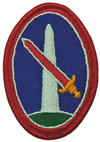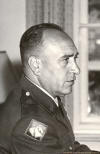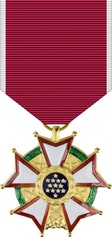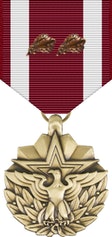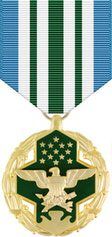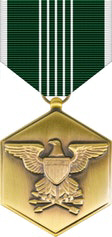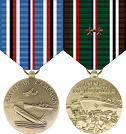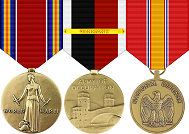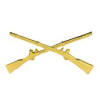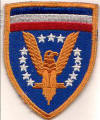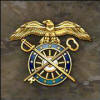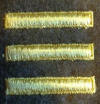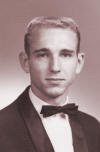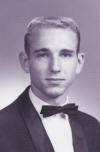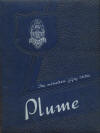|
Our two separate (yet in some ways similar) senior years were
10 years apart, even though
Coach Casteel
is 11½ years older than I am. It seems that he finished high school
a year late because an automobile accident forced him to repeat the
second grade. On the other hand, I finished high school a year late
because of an accident of birth, i.e., I began grade school a year
late because my birthday didn't fall at least three months earlier.
Rather, I was born
just as my father was preparing to deploy to the World War II
ETO, i.e., from England to France, and then on to Berlin as an infantry second lieutenant. He
was commissioned on September 18, 1943, at the
Benning School
for Boys,
i.e., Infantry Officer Candidate School (OCS) located at Fort Benning,
Georgia. This, after his having attended Oklahoma A&M College (now
Oklahoma State University) in Stillwater, my hometown. He would
graduate with a degree in hotel & restaurant management after his
return from the war in February 1946.
Getting back to
Avondale
High School
now—I can see the optimism in those
Plume
faces!
Yes, optimism—even though
'53
bore witness to the
Korean Civil War
that had been raging and
taking some
36,600 dead, 103,300 wounded, 7,900 missing & 4,700 prisoners of
The Best and
Finest of Us™ since
September of
'50—that
is, over a period of just 3 years (an average of
46,600 dead/wounded per year).
The
north invaded the south in June
'50,
and was aided by an October '50 Chinese invasion across the Yalu
River—the latter after the N. Koreans were beaten back beginning with the
risky September
'50
Inchon counterattack by U.N. forces under the overall command of
General of the Army Douglas MacArthur.
Oddly enough,
President Eisenhower
would reap the bitter harvest associated with bringing the third and
final year of the foregoing unconstitutional and undeclared UNSC (UN
Security Council) conflict on the Korean Peninsula to a close—while
he simultaneously, unintentionally and dichotomously planted the
seeds that would lead to America's statutorily authorized, and yet
just as unconstitutional and undeclared, as well as indeterminate and historically
unwinnable counterinsurgency, in another part of
SE Asia,
i.e.,
Vietnam,
Cambodia and
Laos
beginning in '64.
The Best and
Finest of Us™
first arrived in country in '65. By '73, the
SE
Asia Counterinsurgency
took some
58,300 dead, 153,300 wounded, 1,600 missing & 800 prisoners
of
The Best and
Finest of Us™
over a period of some 8 years (an average of
26,500 dead/wounded per year—some
40%
less per year
than the
Korean Civil War).
By
'63—President
John Fitzgerald Kennedy
(JFK)
and future
President Lyndon
Baines Johnson
(LBJ)
(then vice president and former senate majority leader) were already
on a collision course to intensify the by that time ongoing
SE Asia
Counterinsurgency
that the post-World War II Free French lost to
General Vo
Nguyen Giap's
Viet Minh forces in
'54
at Dien Bien Phu.
As a matter of fact, both
Ike's & JFK's
puppet
president in South Vietnam since
'54,
Ngo
Dinh Diem,
would be assassinated within three weeks of
JFK
in November
'63.
Interestingly,
both
Giap
and
Diem
attended the same school in
Hue
when they were boys, although
Diem,
the future S. Vietnamese
dictator
('54-'63),
was ten years older than the future N. Vietnamese Army (NVA) and
Viet Cong (VC) military commander ('46-'75),
General Giap.
Another interesting coincidence is that
Hue
would turn out to be at the center of a fierce battle between
American Marines & Soldiers (5 battalions) and ARVN (Army of S.
Vietnam 11 battalions) and 10 battalions of
Giap's
NVA & VC during the '68 TET Offensive from January to March of that
year. Although a military loss for
Giap,
the TET Offensive turned the tide of U.S. public and congressional
opinion against America's
SE Asia
Counterinsurgency—and
resulted in
LBJ
simultaneously firing & elevating
General William Childs Westmoreland
(USMA
'36),
to the position of Army Chief of Staff ('68-'72)
back in Washington, D.C.
SE Asia
Counterinsurgency
dead and wounded of
The Best and
Finest of Us™
would rapidly accelerate beginning in
'65
when said field artillery officer
assumed command of the
U.S. Military Assistance Command Vietnam
(USMACV)—the latter's headquarters being in Sai Gon.
If Jim Casteel
had not repeated the second grade, he would have graduated with the
AHS Class of
'52—and
very likely have been drafted and sent to Korea by
President Harry
S. Truman
(the "S" not signifying anything, by the way). If Jim had been
deployed to the
Korean Peninsula
as an infantryman,
his chance of being killed would have been 1 in 10,
and
his chance of being wounded would have been 1 in 3
(based on the maximum strength of
The Best and
Finest of Us™
being some 326,000 by
'52).
On the other hand, if I had started grade school
three months earlier,
I would have graduated with the CKHS Class of
'62,
and likely been drafted for two years—and then become a freshman &
sophomore at Georgia Tech (Georgia Institute of Technology) studying
architecture by the time of the
Gulf of Tonkin
Resolution
in
'64,
the latter followed by the first major deployment of
The Best and
Finest of Us™ in
'65.
Yes,
'65
was when
LBJ
used
congress's carte blanche
Gulf of Tonkin Resolution to cavalierly and politically intervene
on behalf of the
already failed
state of South Viet Nam
in its already
failed
counterinsurgency against the Viet Cong and North Viet Nam
(i.e., against
General Giap).
Most accounts indicate that the events leading up to congress's Gulf
of Tonkin Resolution were fabricated by the Johnson
administration—LBJ's focus on South Viet Nam being completely
secondary to his domestic legislative agenda (until it was too late,
of course). LBJ is said to have remarked that he did not intend to
be the first U.S. president to lose a war—which wasn't exactly
correct, of course. After all, HST enjoyed that dubious honor
because of the open ended way in which the Korean Civil War had
ended after China invaded across the Yalu River. In reality, the N.
Koreans are still at war with the U.S. and S. Koreans, i.e., there
is an armistice and not a peace treaty—nor will there ever be with
the brutal "Chun Yun Fat" (the brother of the late "Chun Yun
Fatter") in total control of the north. It is said that the north
has 1,000 airplanes, 6,000 artillery tubes and 4,000 main battle
tanks ready to destroy the south's capital city of Seoul—with just a
few thousand of
The Best and
Finest of Us™
situated below the DMZ and above Seoul. Naturally, it is those few
thousand Americans whose dead and wounded will guarantee that the
Trump administration counterattacks and goes to war with the north.
This, should the first 6,000 artillery rounds land in Seoul, thus
breaking the terms of the '53 armistice—said counterattack having
little if any chance of being debated in congress. In other words, a
Constitutional declaration of war by congress has about as much
chance of being declared as the chance it had in '50.
As
for me, I might have entered Georgia Tech in '63 and
enrolled in ROTC (Reserve Officer Training Corps). In the foregoing
historical scenario, I could very well have been commissioned as an
active duty second lieutenant in the U.S. Army Corps of Engineers by
the summer of
'68
(based on Georgia Tech's 5-year architectural curriculum)—and
perhaps even found myself deployed to
Viet Nam
during the fierce fighting that followed the January
'68
TET (lunar new year) Offensive that shook
South Viet Nam,
Sai Gon,
the
White House,
Capitol Hill
and
American public opinion
to their very foundations. Assuming that as a combat engineer, my
chances of getting killed or wounded would have been about the same
as an infantryman, that would have meant
a 1 in 15 chance of my being killed,
and
a 1 in 3 chance of my being wounded
(based on the total strength of
The Best and
Finest of Us™
being some 536,000 by '68).
In any event, the
foregoing are all interesting conjectures based on just
a one year change
in a couple of
personal histories—sooner
than later, that is.
Naturally, we all
know what happened during the tumultuous election year of
'68.
First, there were two assassinations, i.e.,
Martin Luther King
on April 4th in Memphis, and
JFK's
younger brother,
Robert Francis Kennedy,
on June 6th in Los Angeles.
By
'68 and in ill personal health (and in even worse political health),
LBJ
gave up his aspirations for a second presidential term—leaving
Richard
Milhouse Nixon
to defeat
Hubert Horatio
Humphrey
for the presidency
in November
'68.
While there may have been an upside to that election for
the
middle, working & poor class members of America's voting and
nonvoting electorates—there
was a downside as well.
LBJ
had a very successful run in the domestic arena. On the other hand,
the
SE Asia Counterinsurgency
more or less washed the results of
LBJ's
November '64 landslide election victory
over U.S. Air Force Reserve Major General and U.S. Senator,
Barry Morris Goldwater
(following the November '63 assassination of
JFK)
right down the proverbial political drain—a
huge victory that presented
LBJ
with
90% of the electoral vote,
61% of the popular vote
and
88%
of the states.
One must
remember that
LBJ ran on a
peace platform in '64.
We all remember LBJ's
television campaign spot whereby a little girl, a daisy and a
mushroom cloud combined to send a
 to the American people—that
is, a campaign promise that LBJ failed to keep because of his (and
General Westmoreland's) many miscalculations in Viet Nam.
to the American people—that
is, a campaign promise that LBJ failed to keep because of his (and
General Westmoreland's) many miscalculations in Viet Nam.
By '65
unfortunately,
LBJ had allowed
himself and his administration to be sucked into an
unconstitutionally undeclared, indeterminate and historically
unwinnable counterinsurgency. One could say that the expenditure of
middle, working & poor class
Blood, Time & Money™
could have logically been avoided in
SE Asia
by a White House, Pentagon & parallel congresses whose principals
shamefully and shamelessly ignored the already by that time well
known extreme drawbacks of counterinsurgency warfare—drawbacks whose
proverbial "reinvented wheel" has been rolled across
SW Asia
by
George Walker Bush,
Barack Hussein Obama
and now
Donald John Trump
for the past 36 cumulative years, i.e., Afghanistan (17 years),
"Iraq" (15 years) & now "Syria" (4 years)!
Right. That downside. Well, the
downside of the
RMN
victory was that the American and Vietnamese casualty rates would
dramatically increase in
Viet Nam,
and
The Best and
Finest of Us™
would not come
home from
SE Asia
until
'73.
All the while,
RMN
and his Secretary of State,
Henry
Kissinger,
did their best to facilitate and exercise the routine biennial upper class
Big Six™
Management, Entertainment and Confusion™
of
America's voting electorate—while simultaneously orchestrating a
secret,
massive, indiscriminate
and (in the end)
largely
unsuccessful
carpet
bombing campaign
over Cambodia, Laos and N. Vietnam (and S. Vietnam as well).
In the interim,
RMN
would be found to have committed election year "high crimes and
misdemeanors"—this, leading to his practically being impeached by the
House of
Representatives,
and the first resignation from the
presidency
in American history in
'74
(before
any impeachment articles could be voted on by the
House,
and therefore before
any trial could be conducted by the
Senate
and presided over by the
Chief Justice
of the
supreme Court).
One
could
say that the foregoing demonstrates both the unconstitutional
negatives and the Constitutional positives associated with the upper
class
Big Two™,
i.e.,
Big Government
(President
and
House/Senate) and
Big Legal™
(supreme Court).
The foregoing impeachment process targeting
RMN occurred, notwithstanding the fact that
the
middle, working & poor class voting and nonvoting electorates
presented him
with a landslide presidential election victory in
1972 over
George Stanley McGovern—a
victory that presented
RMN
with
97% of the electoral vote,
61%
of the popular vote
and
96%
of the states.
Ironically,
former U.S. Army Air Forces First Lieutenant,
McGovern,
had been a World War II bomber pilot over Europe—and therefore a
presidential candidate who was intimately aware of the
indiscriminate
devastation that
carpet bombing
can do.
Incidentally, the
nonvoting electorate does its part by simply boycotting elections.
After all, it is much easier for the upper class
Big Media
plus the remaining
Big Five™
to exercise their routine biennial
Management, Entertainment and Confusion™
of the
voting electorate when the number of voters is minimized by the
self-maximization of the number of nonvoters—the nonvoting
electorate essentially and sadly throwing their Constitutional right
to vote to the four winds. After all, when not happy with their
presidential ballot choices, any member of the voting electorate can simply create
his or her own candidate by writing
in the name of any constitutionally qualified American citizen!
James
Mayo "Jim"
Casteel is the middle child of four brothers and a sister, and was
born on
June 17, 1933,
southeast of Atlanta in Newton County, Georgia. His mother and
father earned their living in the cotton mill of the village where
they raised their children.
As I alluded to
earlier in this narrative—when Jim was seven years of age, he was
hit by a car while walking home from school. While unconscious for
more or less two weeks, Jim's doctor told his parents that their
son's shattered left leg might prevent him from walking again. As a
result of the accident, Jim missed a year of grade school and was
forced to repeat the second grade.
According to Mrs.
Casteel, her husband grew to six feet, but kept his weight at 145
pounds during his high school years. Along the way, he lettered in
varsity football, basketball, baseball and track.
In my case
interestingly, I maintained an optimum running weight at CKHS of 145
pounds while growing to 5'10". Although not as athletically
versatile as the future Coach Casteel, I earned two varsity letters,
one in band and the other in track—all the while wielding three
batons, big, small and medium, i.e., those of the marching band drum
major, concert band conductor and third-leg member of the mile relay
team.
Jim established
the Avondale High School record in the 440-yard dash (open quarter
mile). Likewise, I established the Cross Keys High School record in
the 440-yard dash (53.6 seconds) during a 1963 meet at his alma
mater, Avondale. Additionally, I established the CKHS
record for the third-leg of the mile relay at the
'63
Georgia State Track Meet (51.0 seconds).
At a later date,
Jim went on to establish a record of 50.2 seconds in the open
quarter mile at a Georgia State Track Meet during his high school
running years. Interestingly, Jim didn't know that his time was a
state record until three years later when the fellow who broke it told Jim about it.
Here's something
else that Jim likely won't know until he reads this.
During the
'12
Summer
Olympics in Stockholm, the great
Jim Thorpe's
open quarter kilometer (400-meter) time in the
Decathlon
(fifth event) was 52.2 seconds, a fourth place finish
 .
That was the year Thorpe swept the Decathlon point-wise, then being
rewarded with the
Olympic Gold
Medal
by Sweden's King Gustav V who told Thorpe, "You,
sir, are the greatest athlete in the world."
In
'13
however, Thorpe's medal was wrongly taken away from him in violation
of the IOC's (International Olympic Committee) own 30-day protest
rule—the foregoing, simply because of the by then public knowledge
of Thorpe's seemingly questionable amateur status. Thorpe died at
the age of 65 in
'53.
His medal was restored by the IOC in
'83,
more than seventy years after the fact. By then, the original medals
had disappeared. .
That was the year Thorpe swept the Decathlon point-wise, then being
rewarded with the
Olympic Gold
Medal
by Sweden's King Gustav V who told Thorpe, "You,
sir, are the greatest athlete in the world."
In
'13
however, Thorpe's medal was wrongly taken away from him in violation
of the IOC's (International Olympic Committee) own 30-day protest
rule—the foregoing, simply because of the by then public knowledge
of Thorpe's seemingly questionable amateur status. Thorpe died at
the age of 65 in
'53.
His medal was restored by the IOC in
'83,
more than seventy years after the fact. By then, the original medals
had disappeared.
Now, let's return
to when Jim's state record of 50.2 seconds in the open quarter mile
was broken. At about that time, the FSU head track coach, Ken Miller (Mike Long's boss),
called Jim and offered him a partial scholarship and a job in the
lunchroom to help defray expenses at FSU. Jim had only five dollars
and a small suitcase when he arrived on campus after a relatively
long ride on a Greyhound bus due south from Atlanta in north central
Georgia to the northern Florida panhandle city of Tallahassee.
Once he got to
FSU, Jim made it a point to let it be known just how much an
education meant to him—and that he was fully aware that the track scholarship was the
single most important key unlocking the door to the academic
threshold that promised to take him from his
teenage past to a successful adult future where he could support his
family.
Unfortunately,
Jim did not have good grades during his freshman year at FSU ('53-'54). As
a matter of fact, he can't even remember how or when he managed to
acquire the textbooks required for his courses!
Mediocre grades
brought home to Jim the rude awakening that he would not be eligible
to come out for the
'55
track team in the spring of his sophomore year.
Under the circumstances, he decided to volunteer for the active
army draft in February—before the
'55 track season even got
underway. Yes, that's how important grades were, and Jim was acutely
aware of that fact—notwithstanding the flip-side fact that
Jim's freshman year produced several new track records and earned
him high point teammate during the '54 track season.
In the
1950s
and even later on, runners simply had to face facts. That is,
track was not a big moneymaker like the more "crowd pleasing" sports
were and continue to be, e.g., football and baseball. So, Jim would
be allowed little if any leeway for either a literal or symbolic end
run around academic grades on the way to the oval track and his goal
of a bachelor's degree. At the end of the day though, Jim Casteel
would find himself much better off overall after his U.S. Army stint
as a medic. He would return to FSU for his junior year in
'57-'58—with
by that time, a full 2-year track scholarship facilitated by the new
head track coach, Mike Long.
Also at the end
of the day and as the years
passed, Jim began to think more about where he and Eleanor would be
spending eternity—and when they might get there.
At the time of
his Florida State University (FSU) Hall of Fame induction speech, he
just naturally reflected on earthly successes and rewards. He also
joked that he was the "Forrest Gump" of the 1950s. Even so however,
that was also about the time that Jim sharpened his focus on what he
considers to be the more important reward.
In Jim's own
words,
"This life is only temporary, but the life that follows is eternal.
We must run this race with our eyes fixed on this everlasting
reward. This is the reward I'm running for now."
There is one
aspect of young teachers that I find particularly interesting. That
is, they really aren't all that much more mature than their oldest
students. So, that means that they are really more like older
brothers and older sisters to high school seniors, for instance. I
must admit that I didn't think of it that way back in the
1960's
when I had a number of young teachers at CKHS. However, as time went
along I came to that realization. Perhaps that's why at least a few
of my female teachers had a tendency to bawl their eyes out when
simply overwhelmed by the sheer audacity of some of their older male
students in the classroom. But then again, that's another story, I
guess.
What really stood
out about Coach Casteel was the modest way in which he set the
example—thus calmly and quietly motivating me to do my best. Unlike
a basketball and wrestling coach that I had some unpleasant experiences
with—Coach Casteel simply didn't engage in browbeating or other
similar unproductive methods. As a matter of fact, my late band
director was even on the dictatorial side. My relationship with the
latter involves another story altogether, which (like discussing
bawling young women) I may or may not elaborate on at some point in
the future.
Now it could be
that there is a distinct difference in methodology required when
coaching individual track and field athletes versus synchronizing a
5-man basketball team into moving up and down court between baskets
for instance—or training a band to follow the drum major's direction
as it moves onto the field and into the home team's end zone for an
exciting fanfare, before following the drum major on down the field
in the form of a locomotive with wheels simultaneously turning and
smokestack fuming.
As I mentioned
earlier, I was that
drum
major—and believe me when I say that the
Cross Keys
halftime show at a football (or basketball) game was in fact truly
exciting. Plus, after a quarter century of leading soldiers as an
NCO, and commanding three consecutive engineer units of
The Best and
Finest of Us™—I
can say from experience that the self-disciplined art of calm &
quiet motivation is across the board the best of all ways to solicit
learning, growing and advancing in young men and women, whether they
are students, athletes or soldiers.
Frankly, I had no
idea about Coach Casteel's hall of fame running exploits at Florida
State University (FSU), nor of his time as an army medic in
The Best and
Finest of Us™
('55-'57)
at Fort Sam Houston, Texas—the post-Korean War draft having been a
course of action he chose after receiving a partial track
scholarship for his freshman and sophomore years ('53-'54
&
'54-'55).
The photos, below, are pretty much self-explanatory in their
relating some of the story of Jim Casteel's running and coaching
career after he graduated from Avondale High School and then FSU.
Interestingly, the founder of Avondale Estates, Georgia, modeled it
after Shakespeare's Stratford-Upon-Avon in south-central England's
Warwickshire.
Speaking of Coach
Casteel's alma mater (and as mentioned earlier in this narrative),
that's where in
'63
his stopwatch bore witness to my first place win and a
record setting
open quarter mile
(440 yard dash). He clicked me in at
53.6 seconds.
Also in my senior year, he clicked me in at a
record setting
51.0 seconds
for the
third leg of the
mile relay
at the
'63
Georgia State Track Meet.
After a long
career in high school coaching and teaching, Jim Casteel presently
resides in Georgia with his wife, and near his children and
grandchildren.
Both Jim and Eleanor are octogenarians, and enjoy hiking while also searching for
picturesque and exciting southern waterfalls.
Coach Casteel's other
passion is his and Eleanor's back garden at their home in Flowery
Branch, where she proudly and humorously points out that her husband put in more
than two hundred plants—all by himself and with only minimal supervision
from her.
More later on the life and times of
James Mayo Casteel...
Coach
James Mayo Casteel
Florida State University Hall of Famer
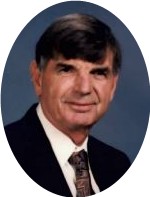
Coach James Mayo Casteel,
age 88 of Flowery Branch, Georgia, died on Monday, January 31, 2022,
at the Northeast Georgia Medical Center in Braselton following a
bout with cancer and two surgeries.
Coach's
wife,
Eleanor,
and their family received admirers and friends at 10:00 AM,
Saturday, February 19, 2022, at the Memorial Park South Funeral Home—this,
immediately followed by a Celebration of Life in the cemetery
chapel, the Reverend John Batusic officiating.
Casteel
was born June 17, 1933, to the late James Mayo and Myrtle Polson
Casteel in Porterdale, Georgia, and was preceded in death by his
parents, 3 brothers; and a sister.
A
Veteran of the United States Army,
Coach
was a retired teacher and track & field coach with the DeKalb County
School System, having begun his career at Cross Keys High School on
North Druid Hills Road in 1958 at Atlanta, Georgia.
Casteel
was a member of Chestnut Mountain Presbyterian Church.
Coach
was inducted into the
Florida State University Hall of Fame
in 1995 as an All American track & field athlete, having set what
would become
longstanding records in the open quarter mile and mile relay.
Coach
is survived by his loving wife, Eleanor; sons &
daughters-in-law, Mike & Donna and Ron & Lisa ; four grandchildren;
and four great-grandchildren.
He
will be sorely missed by all he coached...and all who ran with him!
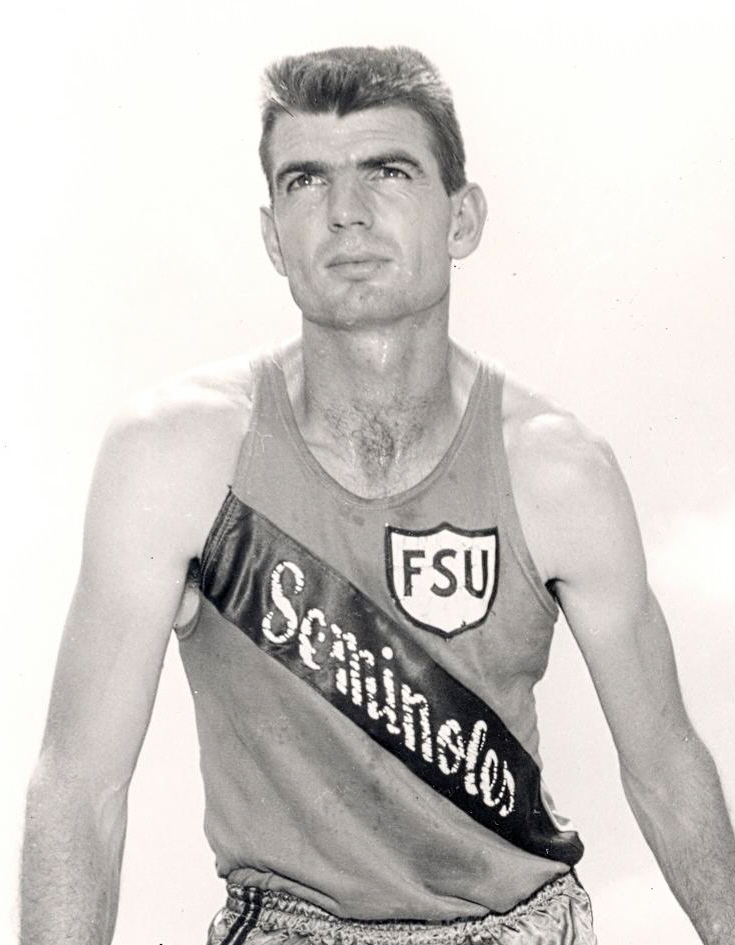
|
 |
|
Retired Coach Jim & Mrs.
Eleanor Long Casteel
September 19, 2018
At Their "Flowery" Home
in Flowery Branch
Hall County Georgia
Click Image to
Enlarge
|
|
 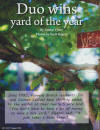 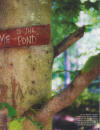   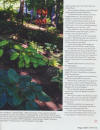 |
|
Jim & Eleanor Long
Casteel
August 2018
Home Magazine "Yard of
the Year"
Residential
Beautification Award
Chamber of Commerce
Greater Hall County
Georgia
Click Any Image to
Enlarge
Click Any Image Twice to
Read Small Print
|
|
 |
|
 |
|
 |
 |
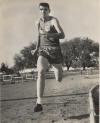 |
 |
 |
 |
|
FSU "Seminoles"
Jim Casteel
"Out of the
Blocks"
Click Photo to
Enlarge |
FSU "Seminoles"
Jim Casteel
"Crosses the
Finish Line"
Click
Photo to Enlarge |
FSU "Seminoles"
'57-'58
Record — 47.0
Seconds
Open Quarter
Mile (440-Yard Dash)
Record Unbroken for 17 Years
Click Photo to Enlarge |
FSU "Seminoles"
'53-'54
'54-'55
'57-'58 '58-'59
Jim Casteel —
Hall of Fame 1995
Self-deprecating
1950s
"Forrest Gump"
with "Better Hair" than Tom Hanks
Click Photo to Enlarge
|
Jim and Eleanor Long Casteel
Hiking
2000
Click Photo to
Enlarge |
Jim and Eleanor Long Casteel
Abrams Falls Tennessee
2007
Click Photo to
Enlarge |
 |
 |
 |
 |
 |
 |
|
FSU "Seminoles"
'53-'54
Mile Relay Team
Jim Casteel
Carlos Fraundorfer
Don Ayers Lloyd
Lassen
Click Photo to Enlarge
|
FSU "Seminoles"
'53-'54
New Track Freshmen
Larry Hountha
Charlie Watson
Jim Casteel Frank
Bright
Click Photo to Enlarge
|
Jim and Eleanor Long Casteel
2015
Click Photo to
Enlarge |
Jim Casteel and
Grandkids
Dupont Forest NC
2008
Click Photo to
Enlarge |
Jim and Eleanor Long Casteel
Shenandoah Valley
2006
Click Photo to
Enlarge |
Jim & Eleanor Long Casteel's
Back Garden
Flowery Branch Georgia
Designed & Planted by
Jim
Click Photo to Enlarge
|
|

Coach Casteel
'62-'63 |

CKHS Varsity Track &
Field
'62-'63 |

Coach Casteel
'62-'63 |
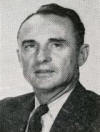 |
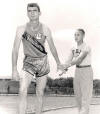 |
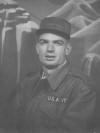 |
 |
|
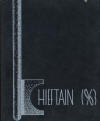
CKHS Yearbook
'62-'63 |

Coach Casteel
'62-'63 |

CKHS Varsity Cross
Country
'62- '63 |
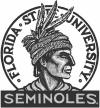 |
|
Cross Keys High School
"Indians"
'59-'60 '60-'61
'61-'62 '92-'63
Head Track Coach
Click Any
Photo/Image
to Enlarge |
Florida State
University "Seminoles"
'53-'54
'54-'55
'57-'58 '58-'59
Mike Long
Head Track Coach
Click Any Photo/Image to Enlarge |
Medic & Still Running
Fort Sam Houston Texas
Jim Casteel
1955-57
Click Photo to Enlarge |
Jim & Eleanor
Long Casteel's
Back Garden
Flowery Branch Georgia
Designed & Planted by
Jim
Click Photo to Enlarge
|
 |
 |
 |
 |
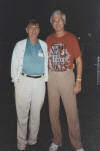 |
 |
|
FSU "Seminoles"
Strozier Library
Renovation
Click Photo to Enlarge |
FSU "Seminoles"
Strozier Library
Renovation
Click Photo to Enlarge |
FSU "Seminoles"
Strozier Library
Renovation
Click Photo to Enlarge |
Jim Casteel
Still Running at
46
with Sammy White
Jack Brocksmith
Louis Johnson
Atlanta Track Club
Gresham Oregon
"Nationals" Mile
Relay Team
1979
Click Photo to
Enlarge |
Track Reunion
1995 FSU '59 Hall of
Famer
Jim Casteel &
1992 FSU '55 Hall of
Famer
Carlos Fraundorfer
circa 1995
Click Photo to
Enlarge |
Sugar Bowl — New Orleans
Jim Casteel
440 Yard Dash
1957
Click Photo to
Enlarge |
|
|





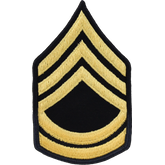



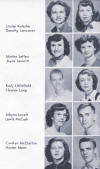

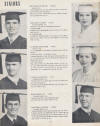


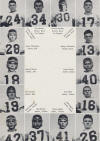




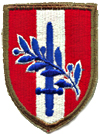
![]()



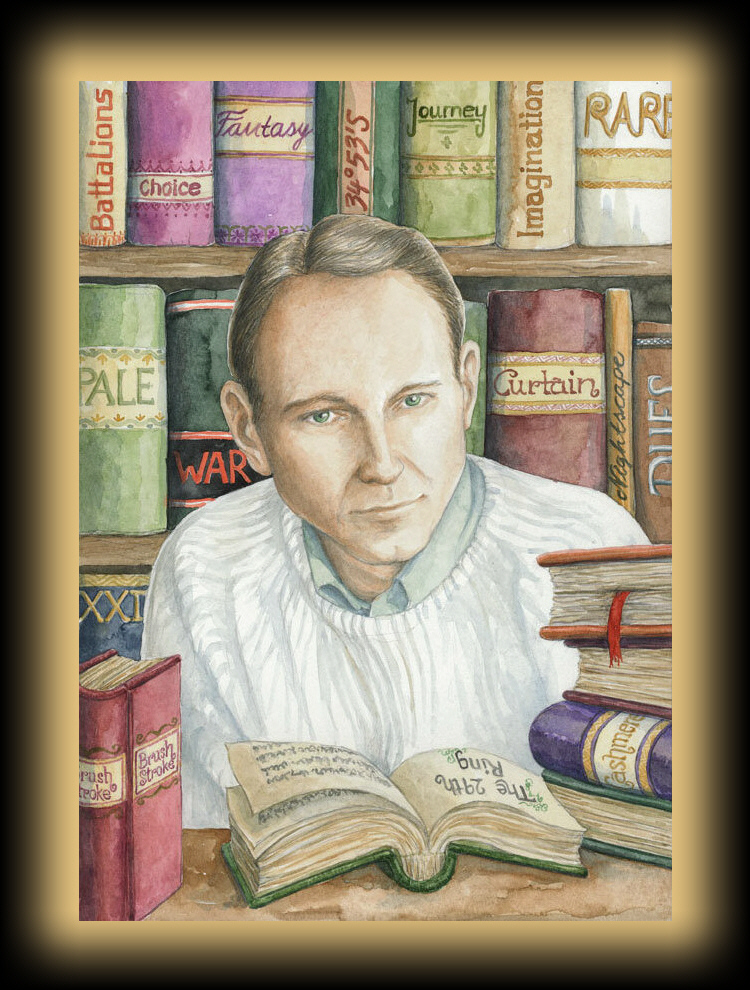

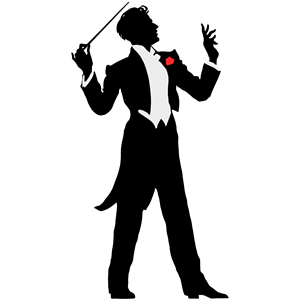




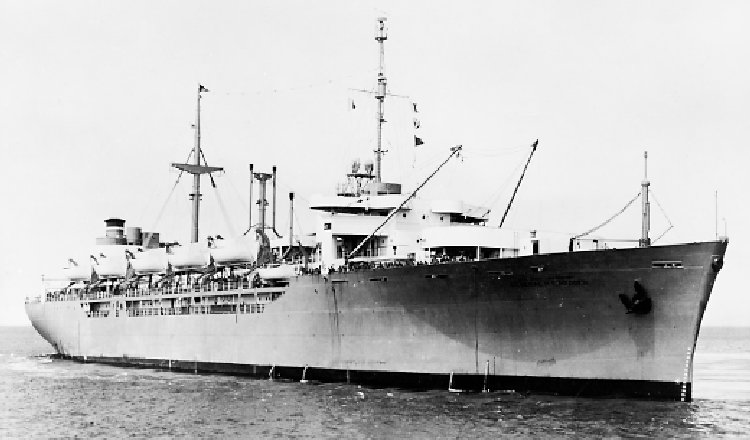
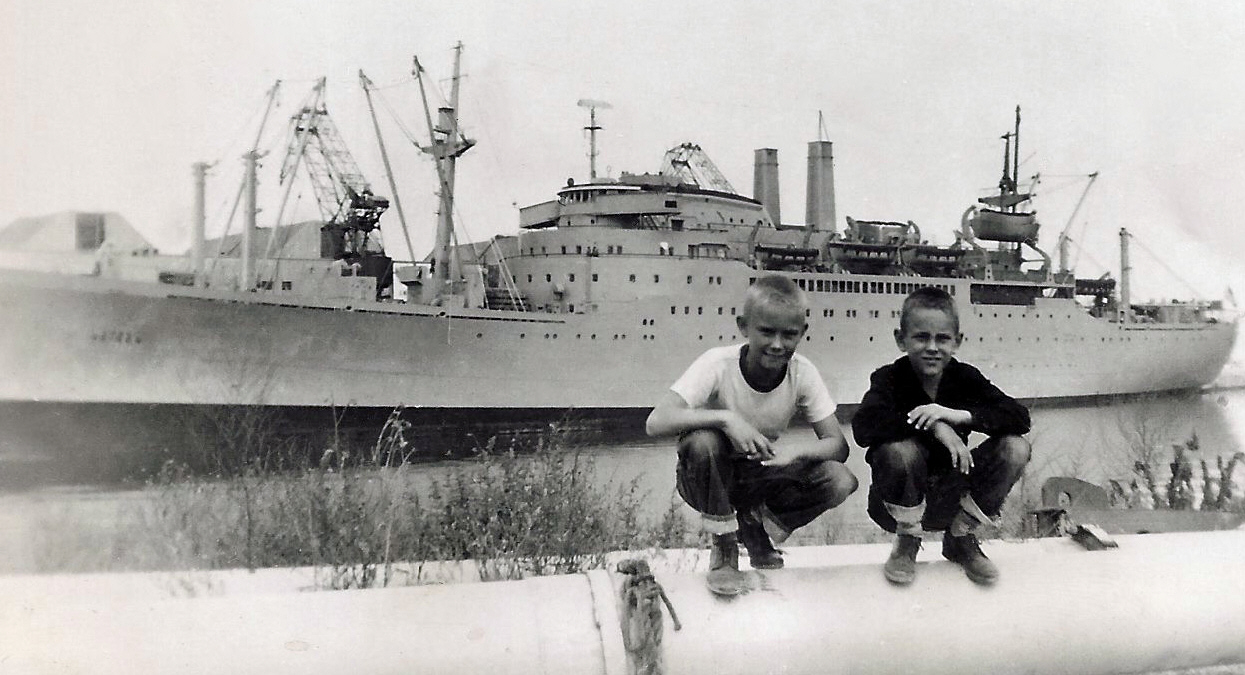
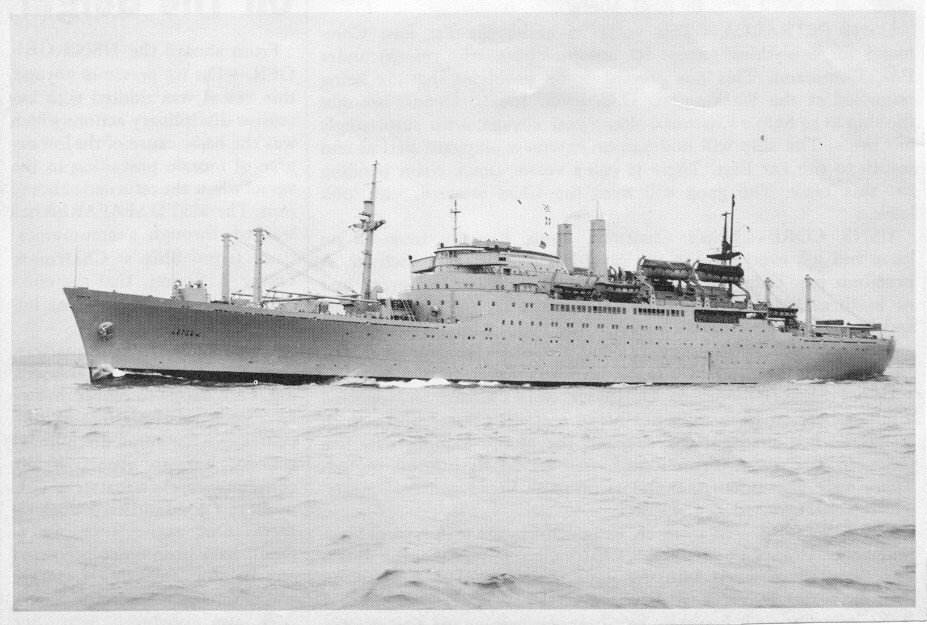


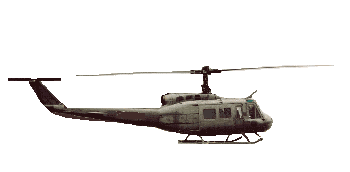

























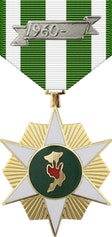




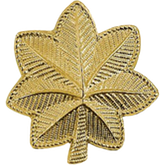
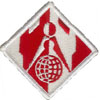


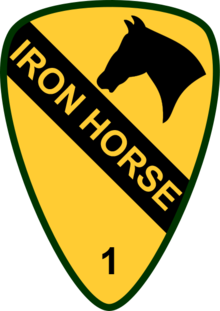

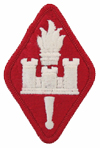
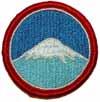

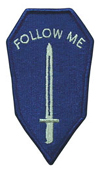

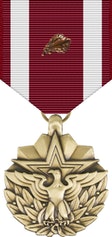
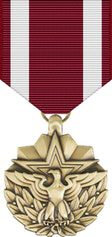




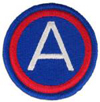

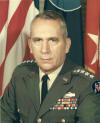
 in
Support of
in
Support of

